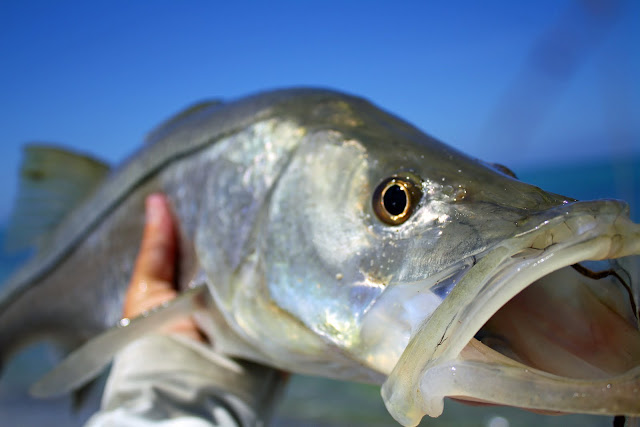 The good news is there is plenty of snook in the surf. We weren’t sure just what the situation would be after our record-cold winter resulted in a major snook kill.
The good news is there is plenty of snook in the surf. We weren’t sure just what the situation would be after our record-cold winter resulted in a major snook kill.But after a month of walking the beaches and casting flies at them, we don’t see much difference from a year ago (a banner season).
In fact, we have noticed more large fish than in the past.
I’ve taken a number of people out to date. All have caught and released snook on fly. If you’ve never caught a snook or never caught one on fly, give me a call. You will succeed.
I had Jason Beary of Warren, Pa., out last week and he got to cast at a lot of fish. The tide wasn’t great, so the feeding window was small. Still, he caught and released a trio of snook, a Spanish mackerel and a couple of ladyfish. I estimate he had shots at nearly 1,000 snook – maybe more.
I look for good fishing this week and tides improve. Culprit last week was a low tide that bottomed out during the middle of the morning.
We’re averaging eight snook per trip. That’s down slightly from a year ago when we averaged 19 snook a trip.
Big snook to date is a 36-incher that I took on (what else?) a Gibby’s D.T. Variation.
My top outing was a morning that I caught and released 22 snook. I’ve yet to have a fishless outing.
Most of the action is taking place in the surf of the Gulf of Mexico about 35 minutes south of Sarasota. Fishing pressure has been light.
I advise clients to wear a cap, lather themselves in sunscreen and have a quality pair of polarized sunglasses. Also, proper footwear is a necessity. I wear flats boots and they work quite well. I also carry plenty of water. Oh, yeah, don’t leave the camera at home.
In addition to snook, we’re seeing tarpon (none of have into casting range), redfish, houndfish, jack crevalle, ladyfish and some really large spotted seatrout.
Dolphins, pelicans, ibis, blue heron, skimmers, plovers, terns, osprey, rays and even a shark or two are visible nearly every day.
Steve Gibson
Southern Drawl Kayak Fishing
Native Watercraft-endorsed guide
www.kayakfishingsarasota.com
http://gibbysfishingblog.blogspot.com/
(941) 284-3406






































